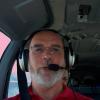Post maintenance checklist
-
Members Online
- eman1200
- A64Pilot
- PeterRus
- Slick Nick
- 47U
- Igor_U
- Wyatt Bistline
- hypertech
- Yannis
- ArtVandelay
- M20 Ogler
- hammdo
- SoccerCA
- fehek28092
- 76Srat
- DonMuncy
- Skyland
- Stealth Mooney
- Jeff Dennerline
- Ethan
- UteM20F
- redbaron1982
- Rick Junkin
- Schllc
- Raptortail
- Wingover
- Minivation
- Marc_B
- Groomsy
- whans
- ta2too
- Shiver
- acekng1
- Jacopa
- Mooney810
- Niko182
- exM20K
- AviH
- gwav8or
- AlexC1201
- warren.huisman
- GeeBee


Recommended Posts
Join the conversation
You can post now and register later. If you have an account, sign in now to post with your account.